Workstation customers make their decisions about the equipment they buy and depend on for their work on the basis of three major vectors: reliability, stability, and performance. AMD says they deliver all that, and at a competitive price.
Workstation users buy workstations and/or workstation accessories and peripherals for two main reasons: reliability and performance. Price is usually a low consideration because the relative cost of the hardware to the labor cost of the user and the application costs is quite small, especially over time.
But reliability is critical, for all the above reasons.
At Siggraph 2018 in Vancouver, AMD introduced the Radeon WX8200. Here was a high-end AIB, with rock solid drivers, very good performance, an aggressive but not apologetic price, and as is usual for AMD, some clever software tricks. Would this turn the tide? AMD sure hopes so, and the company has some confidence it will. Just remember, however, it takes a year in the workstation market to see a shift.
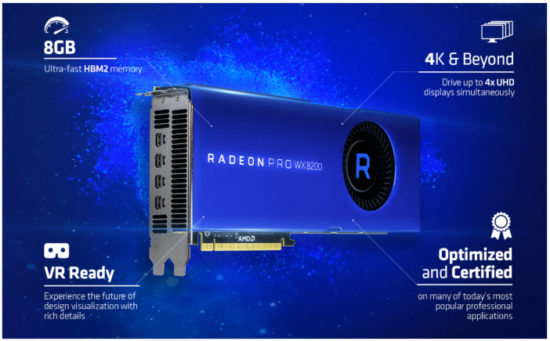
The new, $999 AMD WX8200 has very respectable specifications and should make any workstation user happy, which should also make OEMs happy.

AMD didn’t stop with the usual specifications.
Fix those drivers—oh wait—you did
AMD hired QA Consultants to evaluate the stability of several of the graphics drivers from AMD and Nvidia, and QAC published a report on their findings which can be found here. As you can imagine, AMD wouldn’t have offered the report if it didn’t show them in a positive light, which it did—QAC found AMD got a 93% pass rate on the stability of drivers compared to Nvidia’s 82%, thus proving Apple’s use of AMD was and is justified.
Do some (SW) tricks
AMD didn’t just bring out a new WS AIB, they also introduced with it a dual-driver capability, which allows the user to quickly switch from OpenGL/Vulkan to Direct X by simply clicking within the Catalyst control panel. This is something developers have wanted for a while. They typically design in OGL and then want to see how it plays in Dx, so AMD’s driver switch is a productivity enhancer.
AMD is also offering hybrid CPU-GPU ray-tracing capability and claims a 22% performance improvement over GPU alone. And, as you can imagine, they have test data (from their labs) that indicates they can render their ray-tracing faster than it can be rendered on Nvidia Quadros.
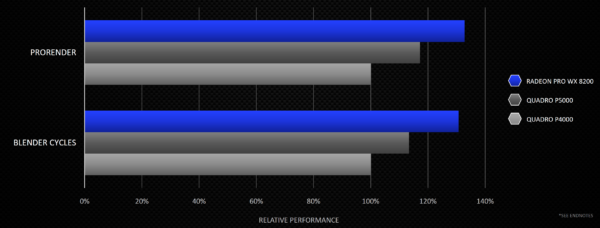
And AMD, like its competitor, offers the ability to design and render at the same time, which seems like a contradiction because as clever as we may think we are, we really can only do one thing at a time. But, in some cases being able to see the effect of a design change with a simultaneous render in another window can speed up the process.
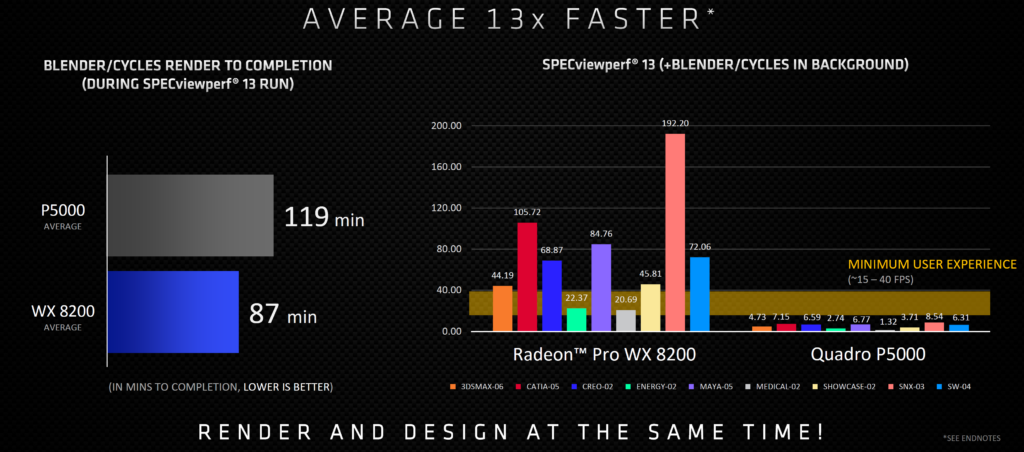
No discussion or presentation on workstations or workstation components would be complete without some charts showing how superior the subject’s system or product was their competitor’s, and AMD provided us with ample examples. The following two charts show some instances.
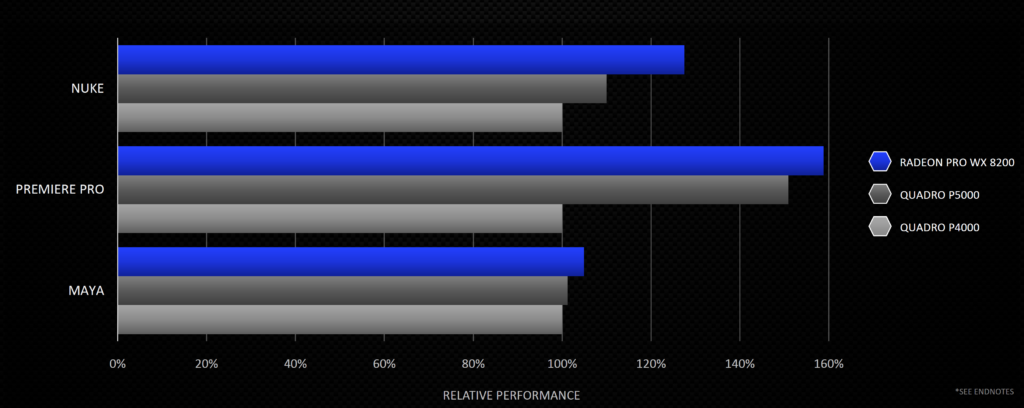
Media and entertainment (M&E) and CAD are the two highest volume applications workstations generally get used for.
AMD is placing the Radeon Pro WX9200 between the $2,000 Quadro P5000 and the $800 Quadro P4000, which given the popularity of these two AIBs seems like a good position.
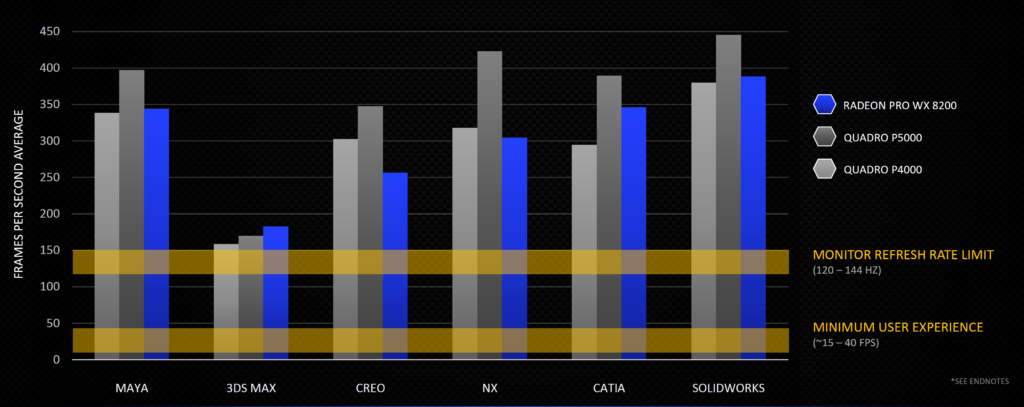
What do we think?
AMD says they have three reasons why you and the OEMs should buy their WS AIBs:
- Most stable drivers
- Multi-tasking
- Performance
AMD has always been able to offer hardware that enables it to compete with powerful competitors. However, in the workstation business, it takes more than FLOPS to win the OEMs, and end users. You must have rock-solid reliability, and AMD has proven that over years by keeping Apple as a customer. But you also need marketing dollars, which includes incentives and market development funds (MDFs) to the OEMs, and that’s probably the biggest challenge AMD faces. One other important factor is commitment. This is a much different executive team from the ones that paid lip service to the workstation and then walked away or the earlier bunch who couldn’t keep the crank turning on Opteron. It’s hard to do, but this is also a group determined to learn from the past. The real commitment they’ve shown to fixing drivers rather than papering over problems with press releases and promises is a very strong indicator of the company’s commitment. Anyone who has bet against AMD has ultimately lost, and the company is stronger than ever these days.





